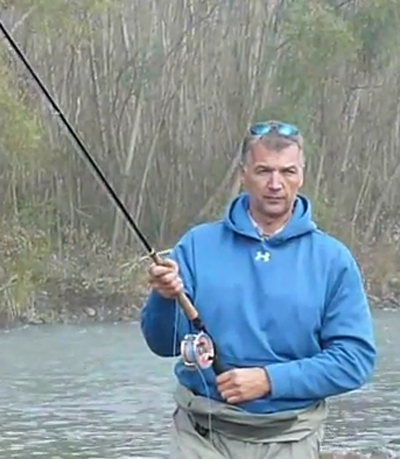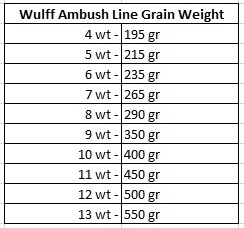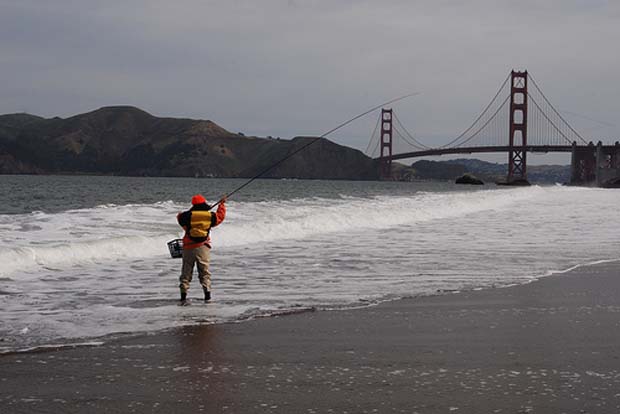PART I: Spey single handed
Put spey into your 9-footer’s hands and let it be all that it can be
[dropcap]M[/dropcap]ake one really simple casting adjustment and deliver the fly greater distances … cover more water, fish fresh or salt tirelessly throughout the day. Spey fly lines are legal, mind-altering (but not psychedelic), and fun. If not “the best thing since sliced bread” for you, exit before entering.

Henrik Mortensen, two handed fly angling Guru.
Find out what the blondes do, inherit Scandanavian fly angling techniques – it will boggle your mind
Stay with your single handed 9-foot fly rods and get much better mileage out of it. Park that WF line for a while. Replace it with a loop to loop connected running line (to your backing), and loop to loop connect it to a shooting head – maybe add a short tip (if needed to fish a range of water columns), and finally a leader – viola, a spey line. Now make roll casts, anchor casts (easy) and you’re good to go.
The confusion syndrome – getting a line on things
Ask almost any angling ‘junky’ that owns a fly shop, works for a big fly line producer or consults regularly with anglers about fly line and rod choices, and give them a product name puzzle. For example, ask this question: “Would such and such fly line work with my 9-foot, 8-weight Orvis rod? If the fly shop does not carry ‘such and such’ or Orvis brands, or the manufacturing – consulting guru has not investigated those products, especially fly line (one of hundreds and hundreds of lines), everyone could be a bit lost, or at least, in an uncomfortable guessing mode.
And here’s why
In the U. S., Canada, most of Europe, New Zealand, Austraila and Tasmania, and South Africa as well as a few other destinations where fly fishing is supported by a tackle industry, anglers are funneled into making fly line selections that, more often than not, require ‘deciphering’. This applies to single handed fly lines, and especially so for fly lines designated as spey fly lines. Experts have shared … pairing lines and rods sometimes requires code breaking, and word has it that there is no fly line “Enigma Machine” in the works.
The fly line product companies have tried to package every possible fly line configuration that could aid angler performance in every possible fishing condition. Their intent, well meaning for sure – satisfies assumed needs and sells more line. Result; maximum confusion. And with some choices, especially switch rods, a complete “Don’t Go There” for some anglers.
Adding a shooting head spey line does require a walk-thru no matter your rod type. There are do’s and dont’s. But it is not like learning to pilot a plane versus driving a car. What you already know will make you whole; quickly.
 Taking ALL the mystery out:
Taking ALL the mystery out:
The Wulff Ambush fly line was not made expressly for single handed rods using spey casting, but it could have. It is a dream fly line on a single handed or switch rod. It can easily be overhead cast, roll cast and anchor cast, a uniqueness that comes from a design feature – rapid tapering in just 20-feet that loads the fly rod ‘right now’. Add tips and fish anywhere for anything. Are there other lines that have the Wulff advantage? Yes, but more on that in Part II.
About spey casting
The entire basis of spey cast is anchor casting, letting the water tension on the fly line load the rod. It is a maturation of the roll cast, which is intuitive and known to almost any fly angler. Yes, there are tweaks (advantages) that are best taught with a hands-on casting lesson. Today, YouTube or Vimeo videos can get you out of the blocks pretty quickly, too. The latter with the assumption you are beyond beginner. A beginner, starting with this system, needs a fly casting instructor and lots of practice.
Casting spey with 9-footers
With spey lines on 9-footers the entire shooting head and loop ‘connection’ to running line are outside the tip-top, unless a cast of less than around 35-feet is planned; the average length of a shooting head is 37 feet – with the first 1-foot unaccounted for.
The length of fly line stripped ‘outside’ the tip-top will be the same length you will cast. In the Scandanavian parlance, that is call “the overhang.” With a spey line on your 9-footer you are ‘not’ going to let more and more line out, as would be the case with conventional WF fly line that is double hauled. What is out is what you get. Said another way: With the weight of the line outside the tip-top, the rod loads ‘right now’ making it easier to cast faster and much easier than casting a WF line. That applies to any casting situation.
Anchor casting: Roll casts and water hauling
Verbalizing casting instructions, with regard to the aforementioned, is at best tough to write about clearly, and even tougher to comprehend – no matter your familiarity with the casting technique being coached. Probably the best video, of the hundreds watched, regarding ‘spey’ casting was done by a Scandanavian named Henrik Mortensen. While Mortensen’s focus is on ‘switch’ rod casting in his video, the techniques used are absolutely correlative to use of a 9-footer. The video is an eye opener with regard to alternatives you probably never even thought about.
Become a better two handed caster. This Scandinavian method is the way to go – watch this video:
[vimeo id=”12623994″ width=”620″ height=”360″]
NOTE: A spey cast is maximized by stopping the forward cast at around 10 o’clock – as you let go of the fly line.
Louis Cahill of Gink & Gasoline demonstrated making a spey cast with a 9-footer in the following YouTube video. BTW: Cahill has a great two part series on fly lines for switch rods, a subject we will be covering next with the added benefit of having the comments from the man who introduced switch rodding in the 1970’s, R. B. Meiser.
[youtube id=”cAZh4gQTVo0″ width=”620″ height=”360″]
Shooting head benefits
If fishing conditions change, you can change out the shooting head to match depth needs. Too, and even easier is adding tips, which are short, variously weighted lines of around 10-feet+/-.
Featured Image: Nick Curcione surf casting in San Francisco with a switch rod. Image credit, www.rioproducts.com.


